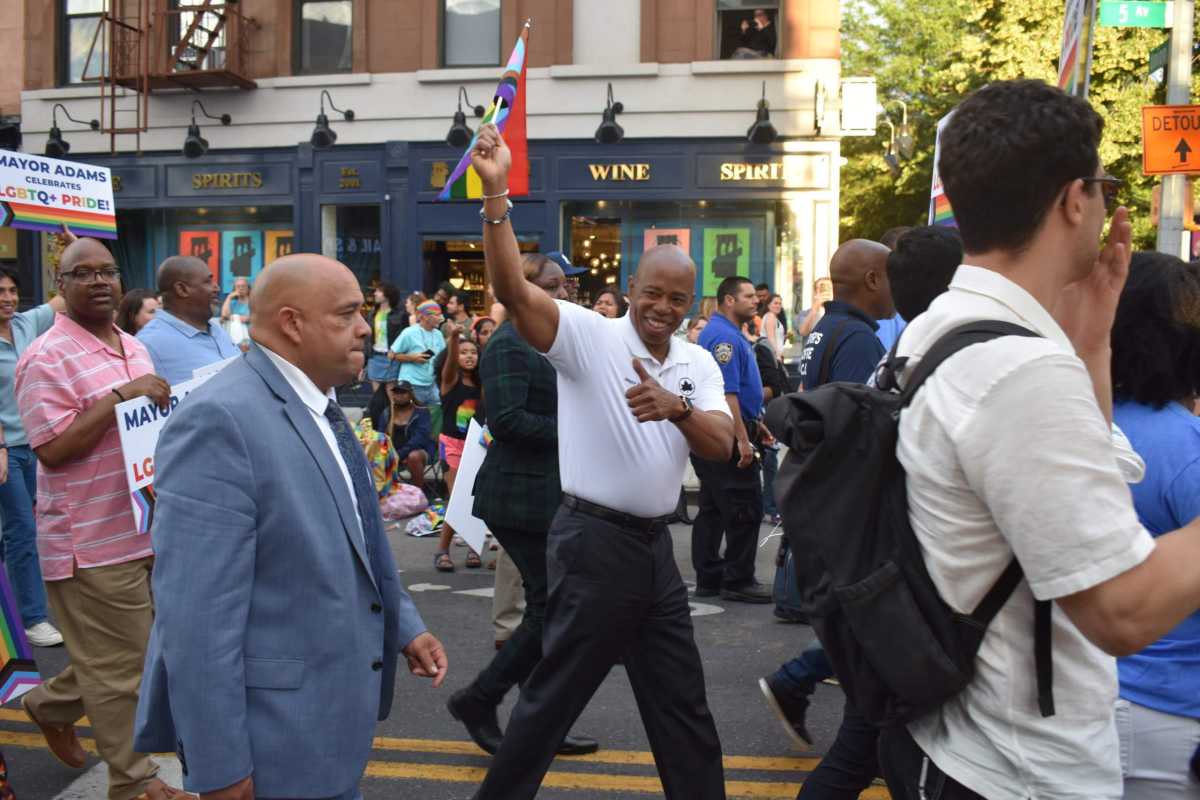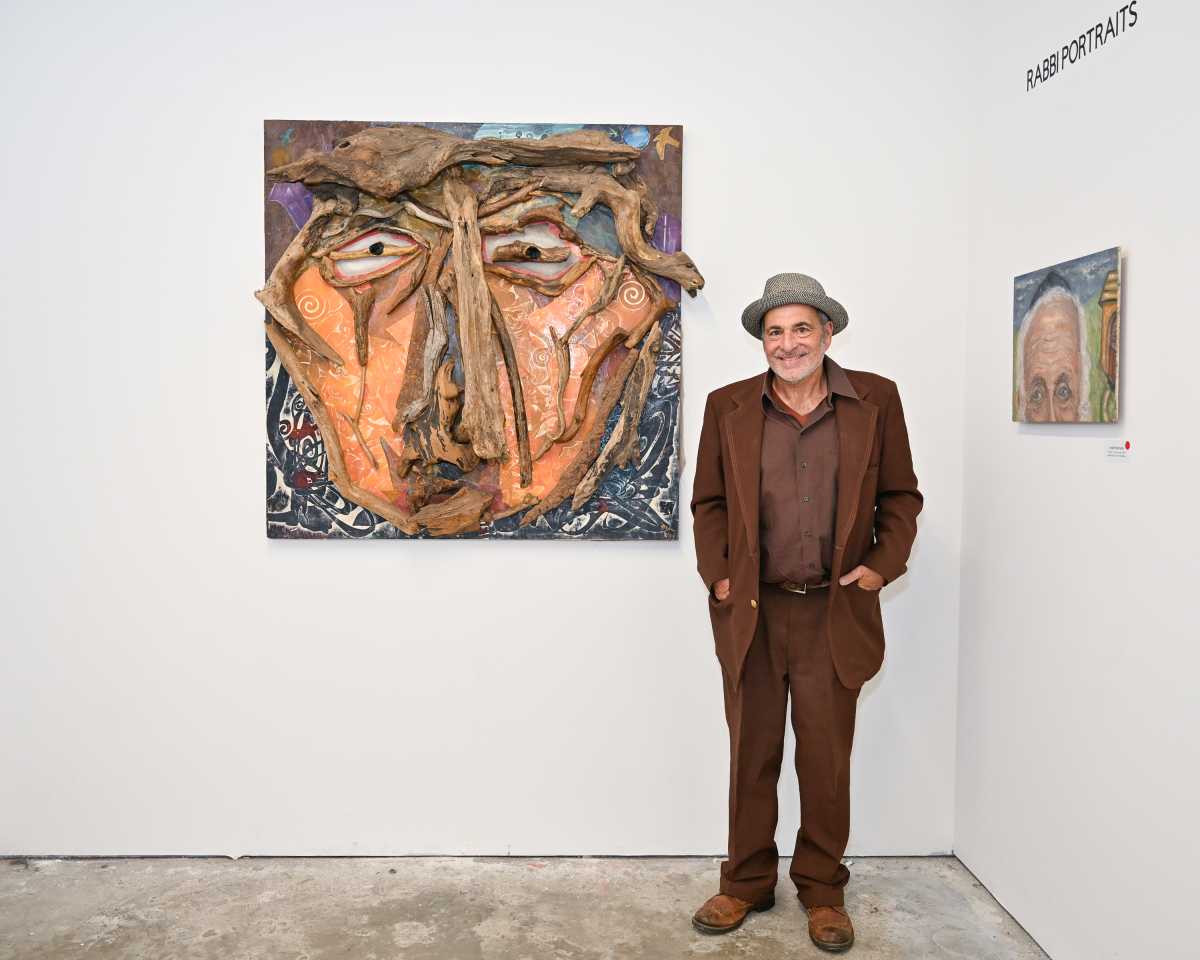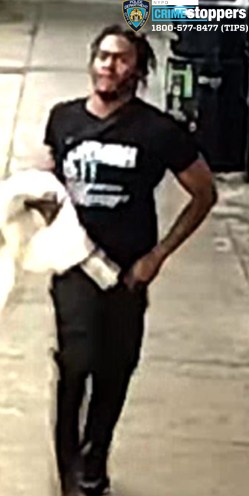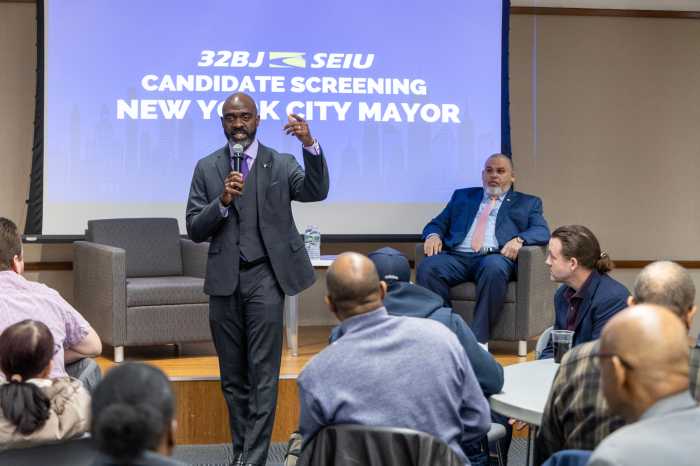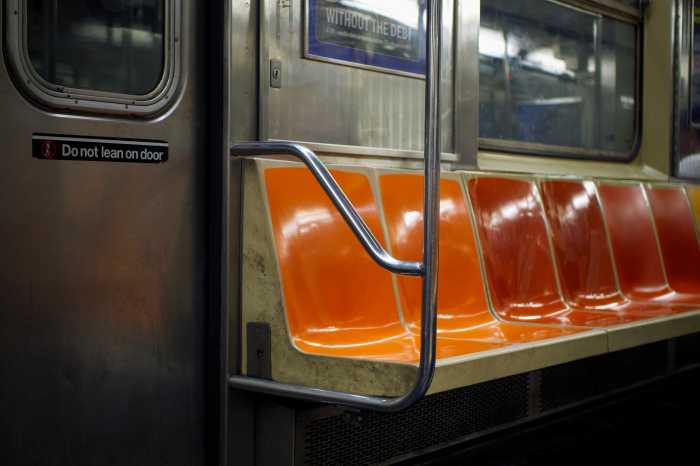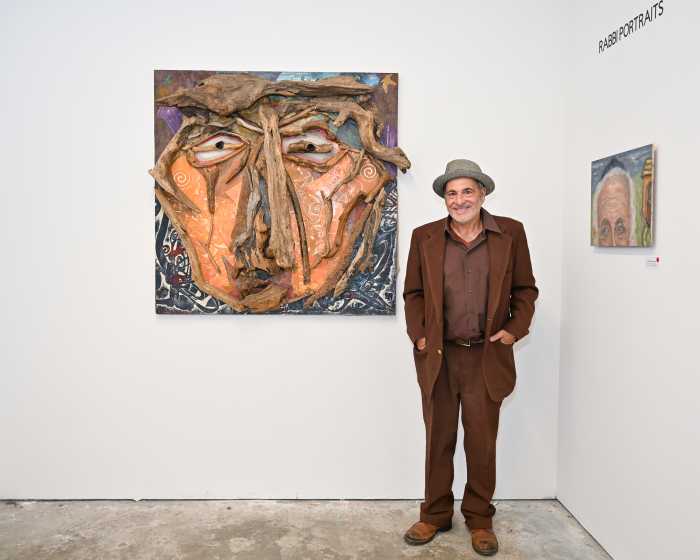BY ALINE REYNOLDS
Cabaret, clowning, acrobats comprise throwback aesthetic
After nine months of renovations, the Canal Park Playhouse is finally ready to open its doors to the Lower Manhattan community. Theater pro Kipp Osborne and his sidekick dummy Jack Coates put the finishing touches to their new venue on Tuesday, November 2 — in preparation for Wednesday’s debut performance.
Jack Coates, a hand-carved beechwood doll, is the playhouse’s artistic director. “This whole thing was Jack’s idea — the playhouse, making this thing happen,” Osborne said. “I’m sort of kidding and I’m not.”
Osborne took on ventriloquism — which he says is as simple as riding a bike — at age 10. “When I worked Off-Off Broadway in the early 80s, it was just beginning,” he said. Osborne would loiter outside of theaters and scrape up $10 a month from street performances (half of his monthly rent in Alphabet City).
Now, Osborne and Coates are hosting shows at the cozy two-room venue located at 508 Canal Street (btw. Greenwich & Washington Sts.). With prolific experience in acting, directing and writing under his belt, this is Osborne’s very first shot at producing (Coates recently promoted him from assistant artistic director).
“I’ve never been on this part of it, and this part of it is a lot of fun, because you can facilitate,” he said. Coates, unfortunately, was not available for an interview.
The Canal Street Playhouse website (www.canalparkplayhouse.com) notes “Mr. Coates feels that being an Artistic Director is no big deal. In his opinion any dummy can do it. So he sees no reason why he shouldn’t throw his hat into the arena and run Canal Park Playhouse.
“Sometimes he’s very naughty and fresh, as artistic directors can be,” Osborne deadpaned. On a more serious note, he compared Jack to the Indian totem — the playhouse’s spiritual center. “He guides us, and tells us what we can and cannot do.”
“It’s just an effort to make it a little bit less serious,” said managing director Sara Murphy, grinning.
Osborne and Coates renovated the ground floor space together. The front room is modestly furnished with a few cabaret tables and chairs. In this space, the playhouse will offer waffles, popcorn and other snacks for audience members to munch on during intermission and after performances. The stage room, meanwhile, features a performance stage and a host of recycled items.
“We did as much as we could to keep it green,” Murphy notes, pointing out that they print programs on recycled vegetable paper and send programs via e-mail. Osborne purchased the theater’s red seats from the Sullivan Street Playhouse. He and Murphy hauled a classic-style wooden desk from Build it Green (in Queens) last week as a prop for their first show, “Sparkling Object.” The desk’s slide-out mini-table, littered with an old directory and business cards, is a relic of Columbia University. Cherry Lane Theatre donated the clean-cut wooden panels stacked on the sides of the right walls. Trapezes line the ceiling of the performance space, which Osborne hopes acrobats will put to good use.
Osborne and Coates will exhibit a variety of styles and genres — from cabaret to clowning to acrobatics to street and subway music. The duo is in search of hidden stars to dazzle their audiences. “I’ll tell you why I love [street musicians]…they’re heirs to vaudeville. It appealed to everybody, whatever your station in life,” Osborne said dreamily.
“Sparkling Object” is a four-character drama about a troubled relationship between a college professor and his 19-year-old daughter. D.B. Gilles, a professor at NYU’s Tisch School of the Arts, wrote the screenplay — which Michael Rau will direct.
“What’s exciting about this space is, you’re so close to the actors that you really get a different kind of view on them,” Rau said. The director is particularly looking forward to using the playhouse’s L.E.D. lights, which— Osborne notes — sets it apart from other small Downtown venues.
“If you build a certain kind of nest, people will come to it,” echoed Osborne. He and Coates already have a lineup through the end of the year. On Friday nights, the playhouse will have a citywide open mic for teens. Properties of Play, the company-in-residence, will present 30-minute improvisational gigs in which audience members get to be a part of the show. “They do something I’ve never seen before,” Osborne said. “When I saw this performance [in Midtown], when the first person went on [stage], I thought, this person is a ringer. They must have made this all up.”
The immediacy of improvisation is a good example of the aesthetic Osborne hopes to cultivate. He promises, “So much of what happens in the entertainment world is very kind of blockbuster-oriented — lots of things are coming at you real strong. We want to have a voice here for things that don’t come at you from that perspective.”
The playhouse lends itself to intimate conversations, which was the duo’s very intention when refurbishing the space. Fostering camaraderie, he said, is just as important as hosting top-notch shows. “My dad was a bus driver. He was married and a father at age 16 and never finished high school. My father-in-law went to Harvard. I want the kind of entertainment thing where these two guys can sit in these two seats, and at the end of the evening, know how they’re connected to each other, rather than how they’re different from each other.”
Prior to the playhouse, Kipp and his wife designed and built furniture out of 508 Canal Street for two decades under the name “Osborne and Osborne.” “Kipp doesn’t like to talk about this because, like many businesses in Tribeca, theirs went out of business as a consequence of 9/11,” Murphy explained.
Osborne also shot an independent feature film there called “Soho, They Call It” in the late 1990s (about the last live New York City chicken market, owned by old-timers, that was closing its doors).
He and Coates are excited to take on a new challenge. “I do feel absolutely that the performing arts, that entertainment, is a collective. I don’t know how it happens — it’s magic.”














